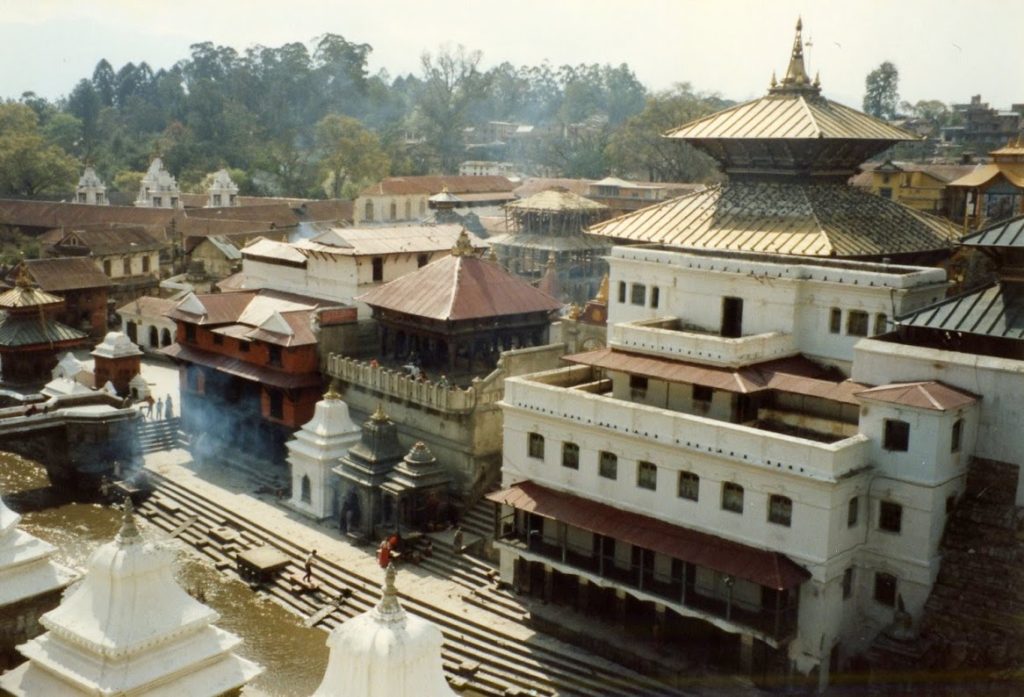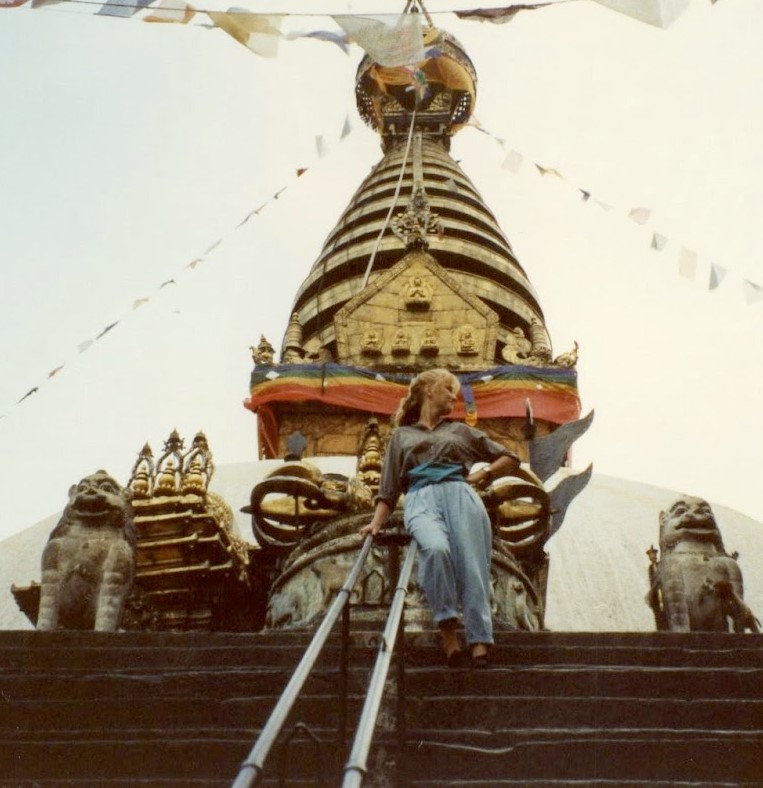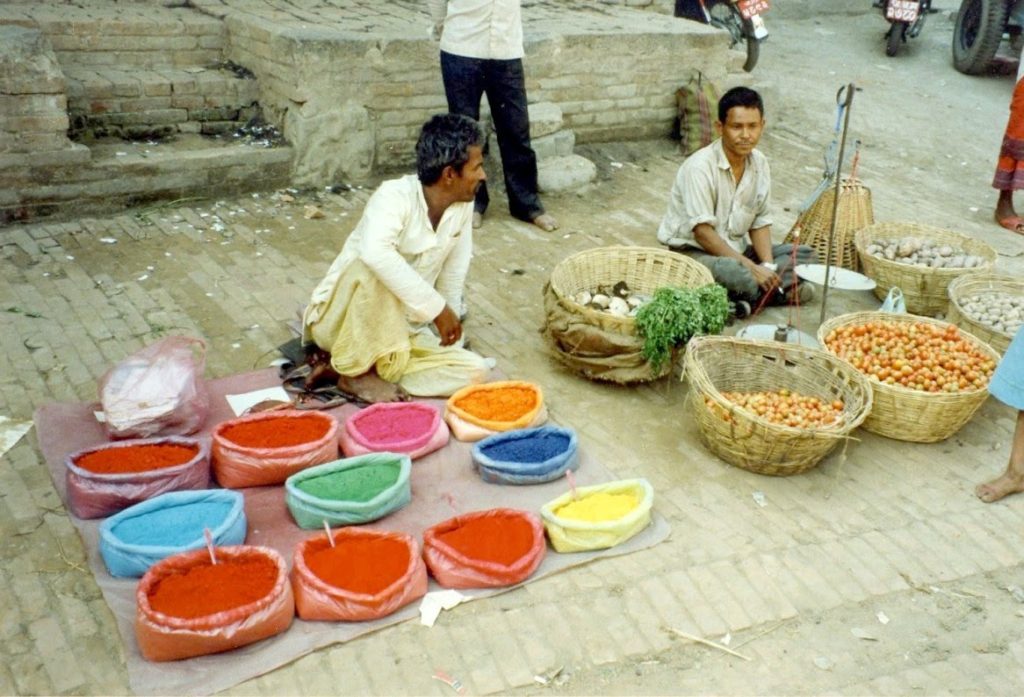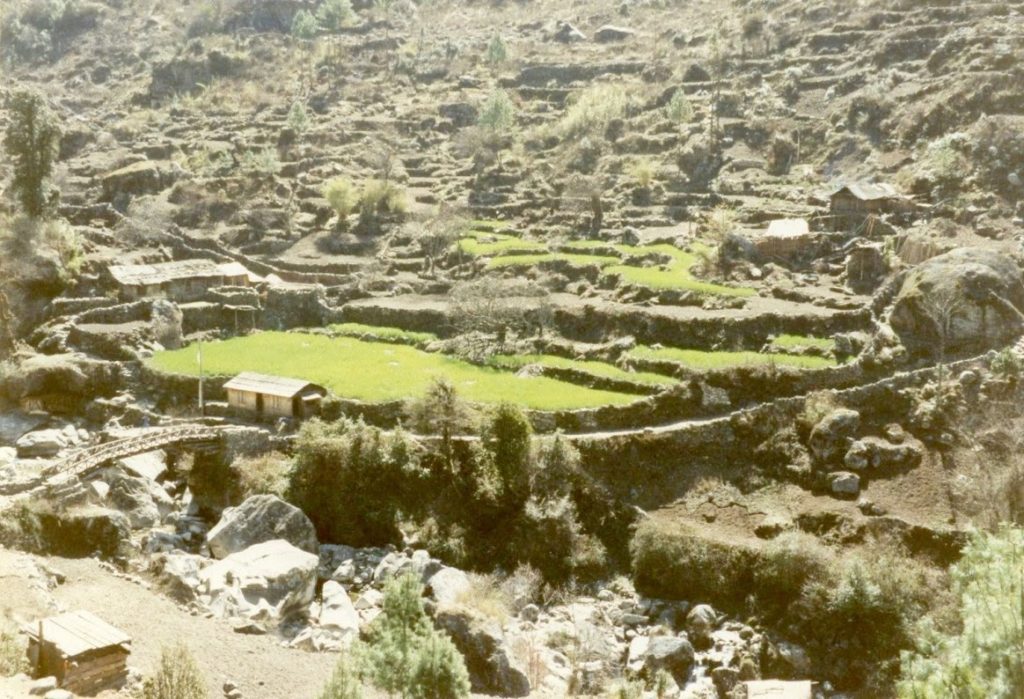
In April 1990, I flew from Sydney to Nepal, via Delhi, intending to meet the One & Only after his trek to Everest Base Camp. I had left my mother in hospital, heavily sedated after an emergency operation, and was heading to Kathmandu where there had recently been a coup – that turned out to be the end of absolute monarchy. Should I turn back to check on my mother? Or should I plough on, not knowing whether or not I would be allowed into Nepal? Back in the days before mobile phones, there was no way of informing the One & Only that I might be stuck in India. Anxiety levels were rising like a tidal wave…
I landed in Kathmandu, grinning with euphoric relief after a thoroughly harrowing night in Delhi, unsure – until the very last moment – whether I would be able to board the plane to Nepal. Luckily, I had met two lovely blokes from Brisbane who were great moral support, and excellent body guards for fending off the unwanted attentions of the hotel manager at the airport hotel. Once safely in Nepal with the One & Only – ‘my own private guide and font of all wisdom’ – I breathed a sigh of relief. All was well. At least for as long as I was free of the dreaded ‘giardia’ (Giardiasis spreads through contaminated food or water or by person-to-person contact. It’s most common in areas with poor sanitation and unsafe drinking water and leads to diarrhoea and dreadful wind.)
We dined that night with a few of the guys who had also been to Base Camp: sizzling steaks and coca cola spiked with Jim Beam under the table. Exhaustion and alcohol fuelled laughter to the point of hysteria before I was packed off to bed at our hotel around the corner.
We gorged on a late breakfast –light and fluffy omelettes crammed with mushrooms and cheese, hot lemon with honey to drink – at a roof top café, before I could be properly introduced to Kathmandu. Happily fed and watered, we set off on a five-hour trek through the city, dodging bicycles, cows, rickshaws, and constant offers of tours, carpets, jewellery and hash. The streets were narrow and dusty, and packed with people. The noise was immense, and the air grew increasingly thick and malodorous as the day got hotter. Many Nepali men had adopted modern western clothing, while the women still wore traditional Nepalese garb. (The kurta suruwal consists of loose, cotton trousers in bright colours, a short sleeved, knee-length, patterned blouse, a large scarf draped over the shoulders.)
To a girl from a first world country, the inequality and level of poverty was appalling, with hygiene and sanitation a non-existent priority. (Nepal is still the poorest country in south Asia). Apparently, 50% of new-born babies died within six months. The GDP depended heavily on the remittances of Nepali workers overseas.
Two beaming young boys were keen to earn a rupee each (worth about five cents back then) to show us the sights, swinging off our arms and wrapping themselves around our legs to get our attention. They followed us all the way across town to the Hindu temple, before peeling off to find new customers. We couldn’t go inside the temple, but we found a spot by the river to rest our weary feet, and watched the world go by: a local holy man doing tricks for the tourists that included swinging a boulder from his penis; acrobatic monkeys leaping across rooftops and swinging through the trees along the river bank; women washing clothes in the river, their children paddling around them; wrinkled and weather worn ancients sporting broad, gummy grins whenever they caught our eyes.

We also found the Buddhist Temple, Bouddanath, and although we weren’t allowed inside here either, we were able to climb up the outside for a fabulous view across the city to the mountains.
By the end of the day, I was thoroughly sunburnt and in need of a cold shower. My hips felt as if they had been wrenched sideways and my feet were blistered. But they still managed to get me to dinner for a delectable bowl of minestrone and a questionable carbonara made with dried bacon. Accompanied by a mad new friend, we went in search of ice cream, while ‘Dr Fog’ tormented the locals, requesting several kilos of hash or a kilo of tiger balm. And ‘why hire a rickshaw? Let’s buy it!’ He left in his wake a bewildered array of Nepali gentlemen, unused to tourists who turned the tables on them so ridiculously. We raced home in two rickshaws, and were easily beaten by Dr Fog, who was seated on the roof of his rickshaw, berating his eager cabby, while our poor driver, considerably older and dealt a much heavier load, struggled to keep up.
After our first night in the ruinously expensive Kathmandu Guest House (AUD $25 a night!!) we moved next door to the Pheasant Farm. For AUD $3.50 we had a ‘stable’ with a straw mattress and shared bathrooms where the toilets didn’t flush, and the drains in the showers were blocked. I suddenly understood why wedge heeled flip flops were available at every roadside stall.

The next day we meandered into a different part of town, where the youth were marching beneath a communist flag and I did my first bit of successful bartering for a pair of green ‘happy pants.’ Wandering off the beaten track, we found a fabric market where the locals shop, and another full of sacks of colourful spices. We crossed a bridge to see children, pigs and a dead cow in the river below. We passed beggars and Buddhist monks, fruit sellers and women returning home from the river with large bundles of clean washing on their heads. We clambered up crumbling steps, dodging piles of refuse. Near the temple, monkeys ran amok, using the city roofs, window ledges and staircases as a giant playground.
Day five saw us heading across town in a rickshaw with a deafening lawn mower engine, bounding furiously over bumps and skidding on newly laid gravel, avoiding calamity after catastrophe by the skin of our teeth. Reaching the outskirts of town, we were squeezed, cheek by jowl, into a windowless bus which careened along narrow, winding roads and around mountains for four hours. Everywhere, the women chatted and smiled while they laboured in the fields with scythes, carried enormous loads on their backs, mended roads, clambered up steep mountainsides collecting wood, and fed their babies. Meanwhile, the older children played under the village pump, or squatted by the side of the road throwing knucklebones, staring and waving as the bus passed by in a cloud of dust. Men sat on the roof, smoking and arguing, cleaning their teeth, watching the horizon. Others were down by the road, chewing gum and selling oranges, poppadums, samosas. Rusty trucks were filled with rocks, kids, scrap iron, bedecked in tinsel and belching black smoke, tooted like maniacs. Cows and goats wandered forlornly across the road. Emaciated chickens pecked at the dust that flew behind us and settled on my clothes, up my nose, in my hair. Layer upon layer of tiered fields crept up the sides of the mountains.

We finally arrived in a tiny village where dinghies were lined up along the edge of the river. Falling from the bus, we huddled in a grubby heap and waited wearily for someone to tell us what to do next. Eventually our guides arrived to feed us lunch and pour us into the waiting boats. Within minutes we were shooting the rapids with consummate skill, born navigators of this perilous river, getting joyfully drenched, with shrieks and laughter, as we flew around boulders and dropped several feet into white water, then floated gently through stretches of deep green, calm, water before pulling into our campsite three hours downstream. Here, dinner was waiting, not to mention several bottles of some incredibly rough local brew that was set to inspire tomorrow’s hangover…
